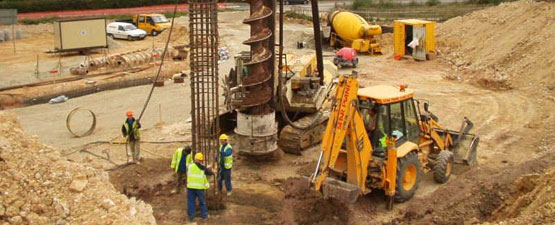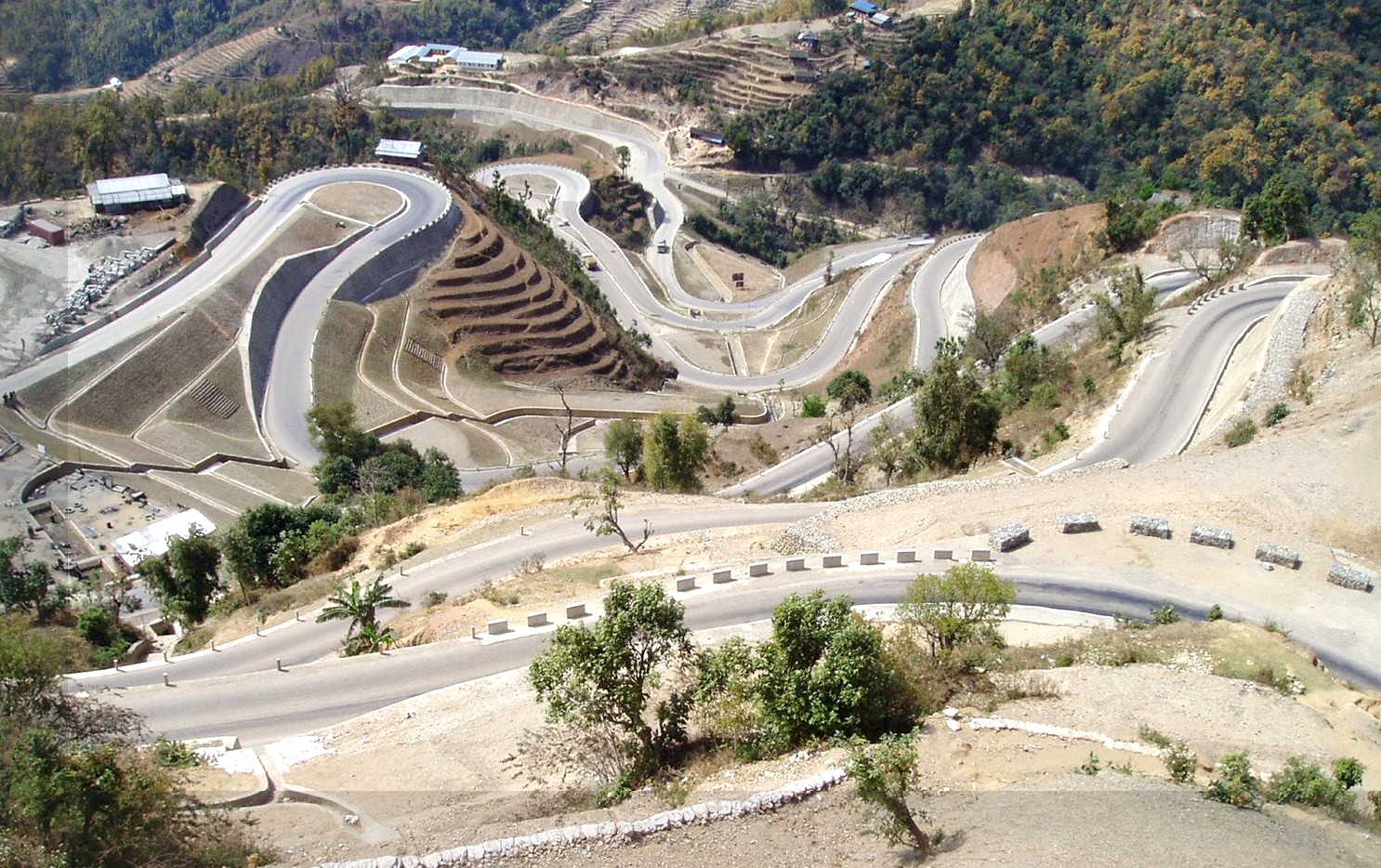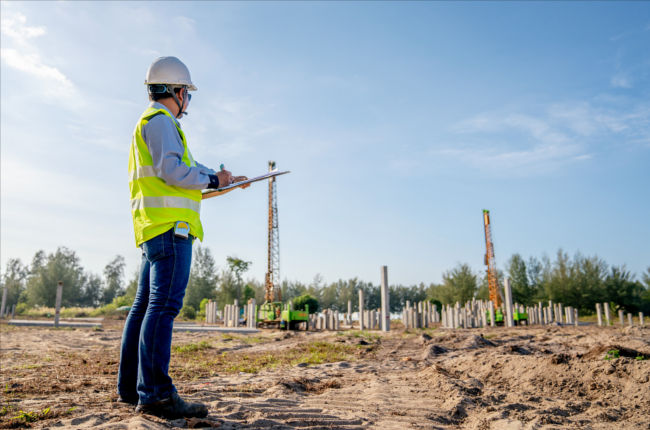Specialized Geotechnical Works for Sustainable Construction Solutions
Wiki Article
How Consulting Engineers Enhance Geotechnical Engineering Projects: Insights Into Their Knowledge, Approaches, and Collaborative Approaches
Consulting engineers are crucial in improving geotechnical engineering jobs, applying their specialized expertise to navigate the intricacies of subsurface problems. Their approaches incorporate a series of site investigation strategies, including Criterion Penetration Examinations (SPT) and Cone Penetration Examinations (CPT), which notify vital choices during the design and building and construction phases. Furthermore, their joint methods foster interaction amongst diverse task stakeholders, eventually shaping the job's trajectory. As we analyze the diverse duties these experts play, it comes to be clear that their contributions prolong past technological competence, triggering a closer consider the implications for job success.Role of Consulting Engineers
The experience of speaking with designers in geotechnical design is fundamental to the successful execution of building tasks. These professionals play a crucial function in analyzing dirt and rock residential properties, which are critical factors affecting layout and building and construction decisions. By conducting comprehensive site investigations, speaking with designers gather necessary information that educates the layout procedure, making certain projects are improved steady and appropriate ground.Consulting engineers also offer indispensable understandings right into danger administration (geotechnical geologist). They determine potential geotechnical risks, such as landslides, dirt liquefaction, and negotiation problems, allowing stakeholders to execute effective reduction approaches. Their proficiency help in enhancing foundation designs, which can lead to substantial expense savings and boosted security
Additionally, speaking with engineers offer as a crucial link in between job owners, engineers, and service providers. Their capability to translate intricate geotechnical data right into actionable recommendations fosters partnership and helps with informed decision-making throughout the task lifecycle. This multidisciplinary technique not just enhances project effectiveness but additionally makes sure compliance with governing requirements and best techniques.
Key Approaches in Geotechnical Engineering

One key methodology is website investigation, which includes carrying out area examinations and research laboratory evaluations to gather information on subsurface problems. Strategies such as Standard Penetration Testing (SPT) and Cone Penetration Testing (CPT) are extensively used to assess soil stratigraphy and stamina. Furthermore, geophysical approaches, consisting of seismic and electric resistivity studies, give non-invasive methods to assess subsurface characteristics.
Another vital method is numerical modeling, which allows engineers to mimic various scenarios and predict how soil-structure communications will behave under different loading conditions. Limited Component Evaluation (FEA) is a typical technique employed in this context.
Moreover, the layout of structures, maintaining structures, and earthworks depends heavily on these techniques - geotechnical geologist. By incorporating innovative logical tools with area data, seeking advice from engineers can create customized services that deal with particular task obstacles, eventually adding to the security Full Article and security of building jobs
Importance of Dirt Analysis
Dirt evaluation functions as a foundational element in geotechnical engineering, providing crucial insights right into the physical and chemical buildings of dirt required for reliable construction preparation. Understanding soil characteristics is important for identifying its load-bearing capability, water drainage behavior, and capacity for negotiation or instability. Detailed soil examinations, including tasting and laboratory screening, aid identify specifications such as dirt type, wetness web content, density, and shear stamina.
These evaluations educate the selection of proper construction methods and products, ultimately influencing job safety and security and longevity. As an example, natural soils may need various structure designs compared to granular dirts, demanding tailored engineering remedies. Furthermore, soil analysis aids in determining pollutants that might present dangers to human wellness or the setting, permitting the development of reduction techniques.
Incorporating soil analysis right into the very early phases of task advancement assists to reduce unanticipated difficulties, making sure that engineers can prepare for and resolve possible problems before they escalate. By developing a comprehensive understanding of the website problems, consulting designers can maximize style efficiency and reduce prices, thus improving the total success of geotechnical engineering jobs.
Joint Techniques in Projects
Successful geotechnical jobs often rest on collective strategies that bring with each other diverse know-how from different disciplines. Efficient collaboration amongst seeking advice from designers, geologists, environmental researchers, and building professionals is vital for dealing with intricate difficulties and optimizing job outcomes. By leveraging the special skills and understanding of each staff member, projects can gain from a holistic understanding of the site problems, regulatory demands, and design restrictions.Routine interaction and interdisciplinary meetings promote the sharing of insights and promote a society of teamwork. These collective initiatives allow the recognition of possible risks early in the job lifecycle, permitting timely reduction techniques. Including responses from stakeholders, including regional neighborhoods and governing firms, ensures that all point of views are thought about, boosting project acceptance and compliance.
Additionally, the combination of sophisticated modern technologies, such as Geographic Details Solution (GIS) and Building Info Modeling (BIM), further boosts cooperation. These tools allow for the real-time sharing of data and visualization of geotechnical problems, advertising informed decision-making. Ultimately, a collaborative approach not only improves job implementation yet also lays the foundation for innovative solutions to intricate geotechnical design difficulties.
Effect On Job Results

Consulting engineers use advanced methods such as risk evaluation and anticipating modeling, which improve the accuracy of task projections. Their capacity to integrate ingenious technologies, like geotechnical instrumentation and data analytics, better refines the style and construction procedures. Therefore, projects experience enhanced performance, decreased expenses, and decreased hold-ups.
Furthermore, promoting reliable communication and partnership amongst team participants improves analytic capabilities. When difficulties emerge, a united front permits quick recognition of remedies, protecting against prospective obstacles. Inevitably, the joint efforts of seeking advice from designers add to better end results, making certain that projects meet both regulatory standards and client expectations.
Verdict

Report this wiki page